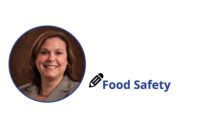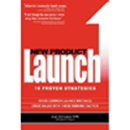![]()
New Product Launches, R&d Budgets Up This Year
by Catherine Penn
Consumer taste buds this year are looking for low carb, healthy, low fat/low trans fat, nutritional, low calorie, low sugar, natural, organic and allergen-free foods. Value added ingredients such as neutraceuticals, vitamins/minerals, probiotics and proteins are also in vogue. Consumer eating habits require bakery and snack food products to be portable, ready-to-eat and easy-to-prepare. These are the findings offered by Stagnito’s New Products Magazine’s Fourth Annual New Product Development Survey.
New product development is becoming increasingly formal, requiring teamwork, a definitive action plan and market research. At one time or another most manufacturers have miscalculated consumer demand, resulting in an unsuccessful launch. Fast to learn, however, the number of new products released to market over the past five years has increased — and introducing more than last year is the strategy for the coming months.
Bakery Products
Breads, rolls, cakes, pastries and donuts are the area of new product development for 72% of bakeries and 54% are making new cookies and crackers. Snack and energy bars absorb the attention of 40%.
As the products that the Atkins diet advises be left on the shelf, it is not surprising that 37% of bakeries are looking to create low-carb solutions. Convenience and portability also represent a new development direction. Low fat, low sugar and organic ingredients are also in the minds of bakery R&D employees.
Some bakeries are working on “convenience items and trend items such as no trans fat, low carb, and organic ingredients.” Another is creating “allergen free, easy prep, natural and/organic staples and desserts.” “We need products that are made of less refined and processed foods,” explains one baker. Another suggests “more whole wheat products for those who need to avoid white flour.” One bakery is creating “packaging material that will protect food from microbial growth and oxidative change during extended shelf life.”
Bakeries allocate about 1% of their workforce to developing new breads. Bakeries with less than $10 million in annual revenue devote 4% of their employees to creating new products. Less than half a percent of the workforce at multinationals spend their time in R&D.
Nine of 10 bakeries use a team approach to new product development. Team members include sales and marketing, production and R&D. Other important team members, on at least two-thirds of teams, include purchasing, upper management, packaging and quality.
Suppliers help create new bakery products 42% of the time. For the most part, suppliers provide raw materials, technical support and ideas.
Bakeries with annual revenue less than $10 million can develop a new product in four to five months. Last year, these bakeries each launched an average of nine new products.Larger bakeries, those with revenue between $10 million and $100 million take up to six months to create a new bakery product. Last year, these bakeries each launched an average of 16 new products at a cost of $54,000 each. Bakeries with annual revenue of $100 million to $1 billion take between seven and nine months to release a new product. Multinationals require 12 months.
Unlike other food and beverage categories, bakeries have consensus on what contributes to an unsuccessful launch. Half recall a failure due to miscalculating consumer demand; one in three warns against charging too much. Poor marketing and distribution can also send a new loaf down a sorry path.
Compared to five years ago, 61% of bakeries released more new bakery products to market in 2003. “Changing consumer needs demand new product flavors and formats,” explains one bakery. This year, however, bakeries may keep new product releases at last year’s level because 46 % will be releasing the same number of new bakery items and 10% will be releasing fewer. Moreover, 58% are holding the R&D budget at last year’s level.
Snack Food Products
Processors in the category of snack food products are developing new snacks 71% of the time. Health and low carb are the main focus of new snacks. One manufacturer is creating “snacks that attack obesity yet taste good and fill you up,” which is a Herculean task for another. On the other hand, just in case, one manufacturer is focusing on “luxury, super-indulgent snacks in light of the low-carb boom.”
Packaging is also a focus; one manufacturer is creating “pocket-sized enclosable pouches,” another is concentrating on “travel friendly packaging — snacks that will fit into car cup holders and have flip-top easy access.”
Suppliers are included as part of the new snack team 40% of the time. Nine of 10 manufacturers depend on suppliers to provide raw materials and ingredients and 74% rely on their technical support and expertise.
Most suppliers provide consulting and ideas, formulation and samples. Suppliers are less likely to provide research or merchandising ideas. Three of four manufacturers include suppliers at the beginning stage (after inception) of creating new snacks. Suppliers help with ideation 30% of the time, and one in four keep suppliers at arms length until after formulation is completed.
Most manufacturers are quite happy to outsource new snack development. Overall, 52% outsource new product development.
Three of four manufacturers say they have a definitive new product development plan. Trade magazines and internal company efforts provide the majority of information that helps develop a new snack.
The creation time to develop a new snack from inception to rollout varies dramatically by company size. Manufacturers with less than $10 million in sales can create a new snack in about four months. Last year, each of these manufacturers launched an average of 10 new snacks.
Manufacturers with revenue between $10 million and $100 million take up to six months to develop a new snack and launched an average of 15 last year. Manufacturers with revenue of $100 million to $1 billion take about nine months and released 11 new snacks last year. Multinationals can take 18 months to get a new snack perfect. Last year, multinationals each released an average of 48 new snacks to market.
Overall, 74% of manufacturers conduct market research prior to launching a new snack. Almost all multinationals conduct market research.
Key areas of concern for multinationals launching new snacks and candies include having too many “me-too” products, marketing, advertising and price. Manufacturers with revenue of $10 million to $1 billion worry most about taste, distribution and marketing. Manufacturers with annual revenue less than $10 million worry most about marketing and packaging.
Miscalculated consumer demand and lack of marketing investment, each mentioned by 47% of manufacturers, are the key areas of failure when launching a new snack. One in three attributes unsuccessful launches to poor distribution, inadequate advertising and marketing, and a poorly conceived product.
Again, the trend for new snacks over the past five years is more, more, more — 55% released more in 2003 compared to five years ago.
For 2004, 51% of manufacturers will be releasing more new snacks and candies compared to 2003. To keep up with the extra work, 49% of manufacturers have increased their R&D budget for this year; however, 54% are planning to do more on the same budget as last year.
Editor’s Note: Catherine Penn is a Contributing Editor of New Products, a Stagnito Communications publication.






